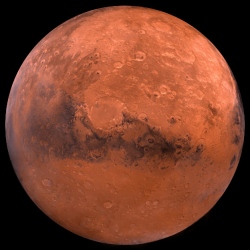
NASA is provided $500,000 in a two year project to SpaceWorks to advance research into human stasis to Mars Spacework proposes the development of an advanced habitat system for transporting crews between the Earth and Mars using non-cryonic torpor sleep states for the duration of the inspace mission.
Under this effort, SpaceWorks will:
(i) Expand the Phase I medical team to address key challenges identified in the initial effort,
(ii) Examine key habitat engineering aspects to further explore and refine design and identify further potential performance gains,
(iii) initiate validation studies with leading medical researchers to understand the effects of prolonged hypothermia, and
(iv) Consider the technology’s impact on alternate exploration missions (Mars moons, asteroid belt, Jovian and Saturn system, etc.).
A new and innovative habitat design is capable of placing the crew in an inactive, torpor state for the duration of the in-space mission segments. This substantially reduces the mass and size of the habitat, which ultimately leads to significant reductions in the overall architecture size.
Our approach for achieving this is based on extending the current and evolving medical practice of Therapeutic Hypothermia (TH), a proven and effective treatment for various traumatic injuries. TH is a medical treatment that lowers a patient’s body temperature by just 5 to 10 degrees Fahrenheit causing their metabolism to reduce significantly and the body to enter an unconscious state.
This method avoids the intractable challenges often associated with cell metabolic cessation through cryogenic freezing and other highly speculative approaches.
TH is a proven treatment for traumatic injuries; however it has not been applied for non-critical care purposes due to current lack of purpose (i.e. no practical need). The opportunity exists to use TH in this capacity to enable and enhance our human spaceflight capability. With this concept, we have the potential to simultaneously solve multiple exploration challenges.
This concept is inherently multifaceted and introduces a number of wide-ranging questions that span medicine, physiology, psychology, and aerospace design. To summarize a few medical facts on what is currently known:
• Therapeutic Hypothermia (TH) is an emerging and rapidly evolving medical procedure that the medical community is still identifying the multiple benefits and uses to which it can be applied
• Human patients have been placed in a continuous torpor state using TH protocols for periods up to 14-days
• Humans have undergone multiple TH induction cycles with no negative or detrimental effects reported in either the near term recovery period or long term
• Testing in animals has shown that cancerous tumor growth and the effects of radiation are significantly reduced and slowed during the torpor-state (on par with metabolic rate reduction)
• While not currently recommended as a standard treatment for increased intracranial pressure (ICP) in any clinical setting, recent studies suggested that TH can lower ICP and may improve patient outcomes
• Human patients have regularly received sustenance for extended durations (over 1 year) from an all-liquid solution, called Total Parenteral Nutrition (TPN), which can meet all hydration and nutritional needs
• Based on over a dozen studies with hundreds of patients, there was no evidence suggesting that TPN promotes bacterial overgrowth, impairs neutrophil functions, inhibits blood’s bactericidal effect, causes villous atrophy, or increases the risk of death due to gastrointestinal complications
• All key hardware systems required are currently available in non- or semi-automated forms
While hard to assess quantitatively, through supposition it is reasonable to assume that the crew’s mental well-being will be substantially improved by effectively eliminating the 400 days spent in transit to and from Mars. They will enter the torpor state upon Earth departure and awake in Mars orbit approximately 200 days later.
Based on this body of knowledge and numerous conversations with medical experts, we can make the following summary statements:
• To date, the team has found no “show-stoppers”, although more research and review is still required.
• Results indicate substantial habitat mass reduction and significant architecture improvements are achievable even for conservative system designs
• In the cumulative experiences of the team, no other single technology has been found to have such asignificant impact on a system element and across an architecture
Based on research and work conducted in Phase I, the SpaceWorks-team firmly believes there is strong evidence to justify the initiation of a rigorous development program if the merits of this approach continue to be justified.
